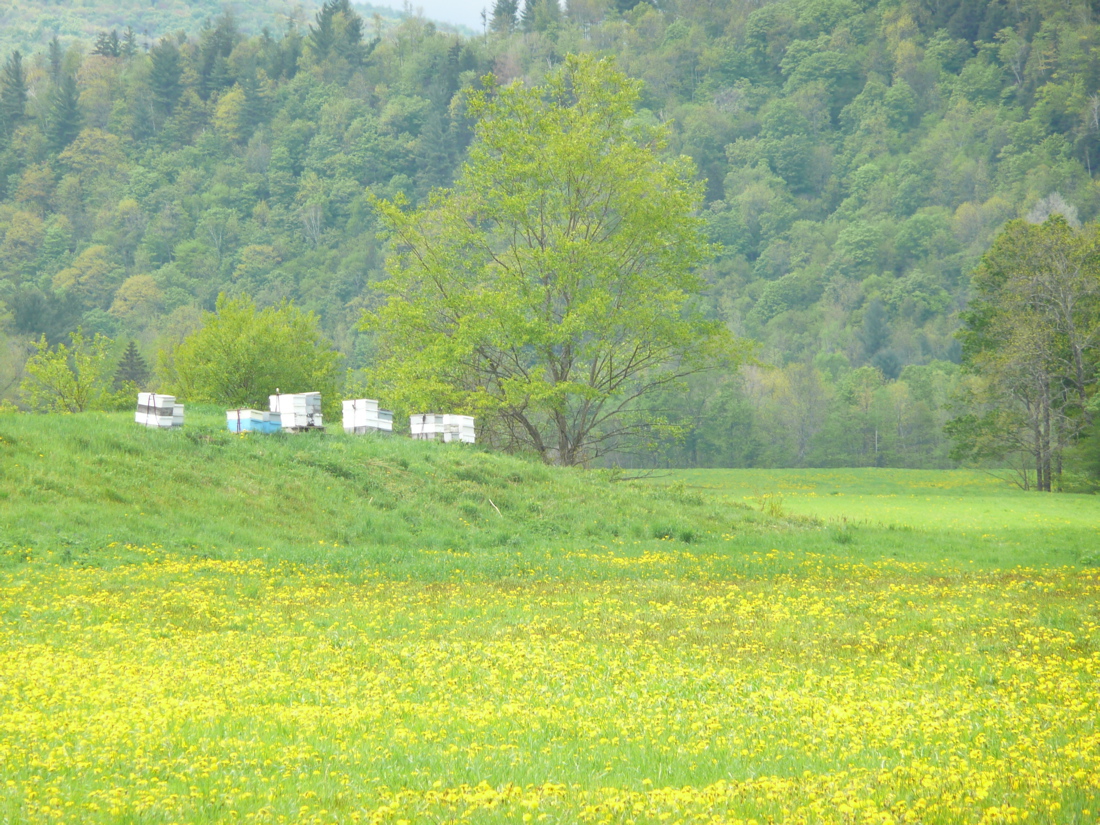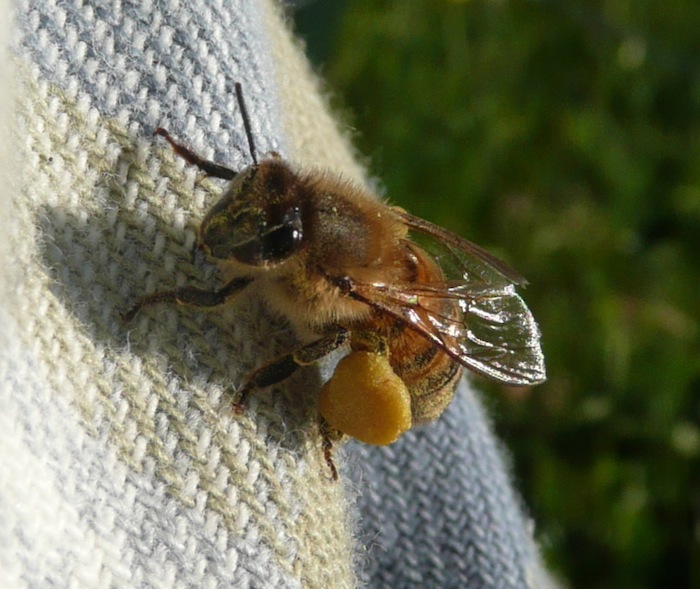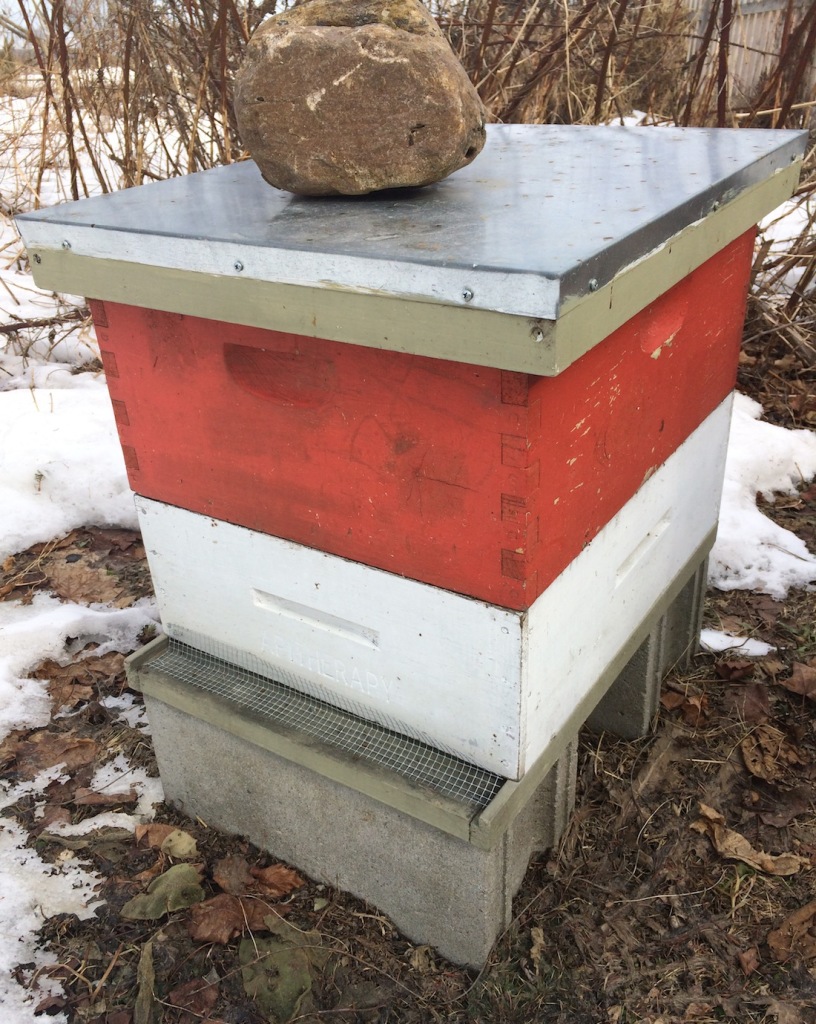Live From the Hive: May 2015

“Dandelions” by Annie Watson, Thistle Hill Studio
In May the dandelions bloom, providing nectar and pollen to the growing numbers of bees in strong colonies. The bees are out in numbers on the warm days, gathering food for their growing families.
Dandelions are amazing plants with many medicinal properties. Their masses of blooms all over New England fields and lawns help to feed our bees. Thankfully, the homeowners’ practice of trying to eradicate dandelions from their lawns is on the wane. These hardy plants, though not native to North America — having been brought here by European settlers — are full of vitamins, health-promoting compounds and antioxidants. Dandelion is best known for its support of liver function. And, of course, it is a major food for honey bees at a critical time in the life cycle of the colony when it’s essential to gather the maximum amount of food.

 It was a difficult winter for the bees. At my house in the Champlain Valley, only one out of three colonies remains alive. We gave them a super of honey, and hope that they will make it through.
It was a difficult winter for the bees. At my house in the Champlain Valley, only one out of three colonies remains alive. We gave them a super of honey, and hope that they will make it through.